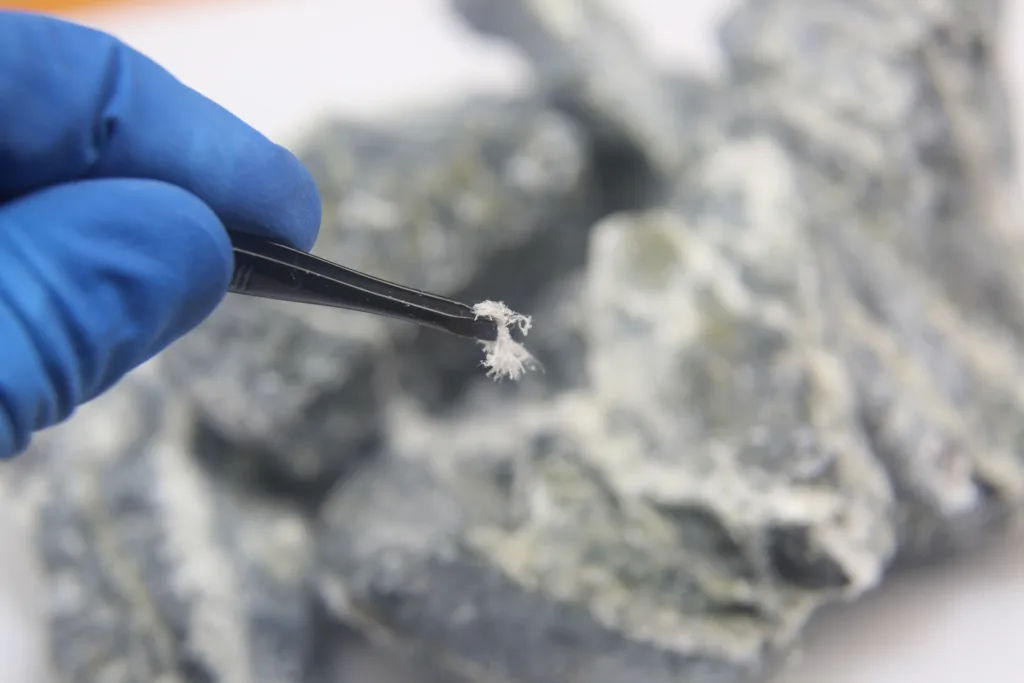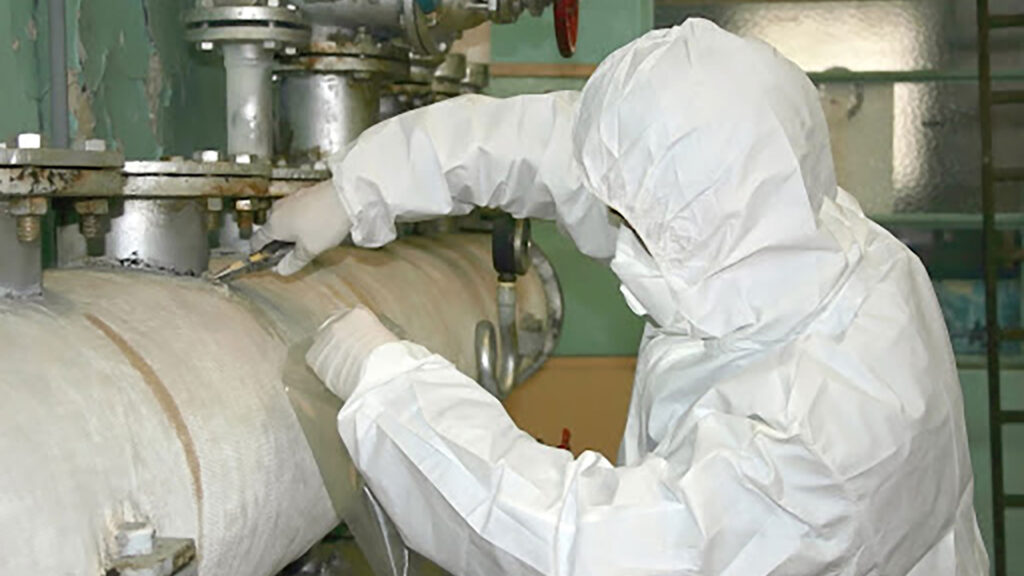Asbestos is a highly dangerous material that manufacturers have used in many products over the years. Its heat-resistant and insulating properties made it popular in various industries, from construction to automotive manufacturing.
Unfortunately, asbestos exposure can lead to serious health issues, including mesothelioma and lung cancer. If you have been diagnosed with an asbestos-related illness, you deserve to know your rights.
Never wait to seek legal guidance from a trusted and experienced Chicago asbestos injury lawyer who can assess your options for legal relief.
History of Asbestos Use
For centuries, asbestos has been valuable for its remarkable properties. Its use dates back to ancient times, when people wove it into fabrics for its fireproof qualities. However, it wasn’t until the Industrial Revolution that asbestos became widely used in various industries.
Asbestos’s affordability and versatility made it popular for insulation, fireproofing, and strengthening materials. Soon, asbestos was everywhere we turned, including in homes, offices, and other buildings.
Bans Against Asbestos Use
In recent years, there has been a growing recognition of the dangers asbestos exposure poses and an increasing push for stricter regulations around its use. As a result, many countries have implemented bans or restrictions on using asbestos in various industries. These bans are crucial in protecting public health and preventing future cases of asbestos-related illnesses.
These bans aim to reduce the risk of asbestos exposure in workplaces and public spaces, ultimately decreasing the incidence of asbestos-related diseases. By eliminating or minimizing the use of asbestos-containing materials, governments hope to protect workers, consumers, and the general population from the harmful effects of asbestos.
Though bans on asbestos use are a step in the right direction, everyone should know that products can still contain asbestos in the U.S., and exposure continues to happen.
By holding accountable those responsible for exposing individuals to asbestos, we can work towards a future where asbestos-related diseases are a thing of the past. Discuss an asbestos-related illness with a skilled asbestos injury lawyer who can uphold your rights and identify liable parties.

What Products Still Contain Asbestos?
Despite the well-known health risks associated with asbestos, it is still present in many products today. While its use has significantly declined over the years, there are still certain industries that continue to use asbestos-containing materials. Here are some of the products that may still contain asbestos:
Construction Materials
Asbestos remains in various construction materials, including insulation, roofing shingles, flooring tiles, and cement pipes. Older homes and buildings are particularly at risk, as they may contain asbestos materials that were installed decades ago.
Automotive Parts
Asbestos was common in brake pads and clutch plates due to its heat resistance properties. While many manufacturers have moved away from using asbestos, there may still be older vehicles on the road with asbestos-containing brake components.
Electrical Equipment
Certain electrical products, such as electrical panels, fuse boxes, and wiring insulation, may contain asbestos. This is especially true for older buildings and homes that have not been updated or renovated.
Textiles
Asbestos was once common in the manufacturing of textiles, particularly for fireproof clothing and protective gear. While the use of asbestos in textiles has significantly decreased, it is still possible to come across asbestos-containing textile products, especially in older industrial settings.
Consumer Products
While regulations have been put in place to limit the use of asbestos in consumer products, there may still be some items that contain traces of asbestos. These include older appliances, such as hair dryers, toasters, and popcorn poppers, as well as certain talc-based cosmetics.
The presence of asbestos does not automatically mean that you are at risk of exposure. Asbestos becomes dangerous when its fibers release into the air, and you inhale them. However, the continued use of this dangerous substance means the risk of exposure still exists should something release asbestos fibers into your breathing air.
How Does Asbestos Exposure Happen?
Asbestos exposure can occur in various ways, depending on the environment and the products containing asbestos. Here are the most common routes of exposure:
Inhalation
Inhaling asbestos fibers is the most common way of exposure. When asbestos-containing materials are disturbed or damaged, microscopic fibers can be released into the air. People can then inhale these fibers, leading to potential health risks.
Ingestion
Ingestion of asbestos may occur when tiny asbestos fibers contaminate food or drink. This can happen if asbestos-containing materials are in the vicinity of food preparation areas or if workers do not follow proper hygiene practices.
Skin Contact
Although less common, direct skin contact with asbestos can also lead to exposure. This typically happens when individuals handle asbestos-containing materials without proper protective equipment.
Potential Illnesses from Asbestos Exposure
Exposure to asbestos can have devastating consequences for your health. The effects may not be immediately apparent, as asbestos-related illnesses often take many years to develop.
Here are some of the potential illnesses associated with asbestos exposure:
- Mesothelioma – Mesothelioma is a rare and aggressive form of cancer that primarily affects the lining of the lungs, abdomen, or heart. It is almost exclusively due to asbestos exposure and has a poor prognosis. Symptoms may include shortness of breath, chest pain, and persistent coughing.
- Lung Cancer – Asbestos exposure is a significant risk factor for lung cancer. For individuals who have a history of smoking, the risk is even greater. Symptoms of asbestos-related lung cancer may include persistent cough, chest pain, and difficulty breathing.
- Asbestosis – Asbestosis is a chronic lung condition that occurs as a result of long-term asbestos exposure. It involves the scarring and inflammation of the lung tissue, which can lead to breathing difficulties, persistent cough, and chest pain.
- Pleural Thickening – Pleural thickening is a non-cancerous condition that causes the lining of the lungs to thicken and stiffen. It can lead to breathing difficulties and chest discomfort.
- Pleural Effusion – Pleural effusion refers to fluid accumulation in the space between the lungs and the chest wall. It can cause chest pain, shortness of breath, and coughing.
Your Rights After an Asbestos-Related Diagnosis
If you have received a diagnosis of an asbestos-related illness, always understand your rights and explore your legal options. While no amount of compensation can fully reverse the damage, it can help provide financial support for medical expenses, lost income, and emotional suffering.
In asbestos-related cases, time is of the essence. Statutes of limitations restrict the time frame to file a lawsuit, so it is crucial to consult with an experienced asbestos injury attorney as soon as possible. They can evaluate your case, gather evidence, and guide you through the legal process.
Consult an Asbestos Injury Attorney Today
If you or a loved one has an asbestos-related illness, don’t hesitate to reach out to a qualified asbestos injury attorney. You might obtain significant compensation for your illness and losses. Seek a free consultation as soon as possible.




